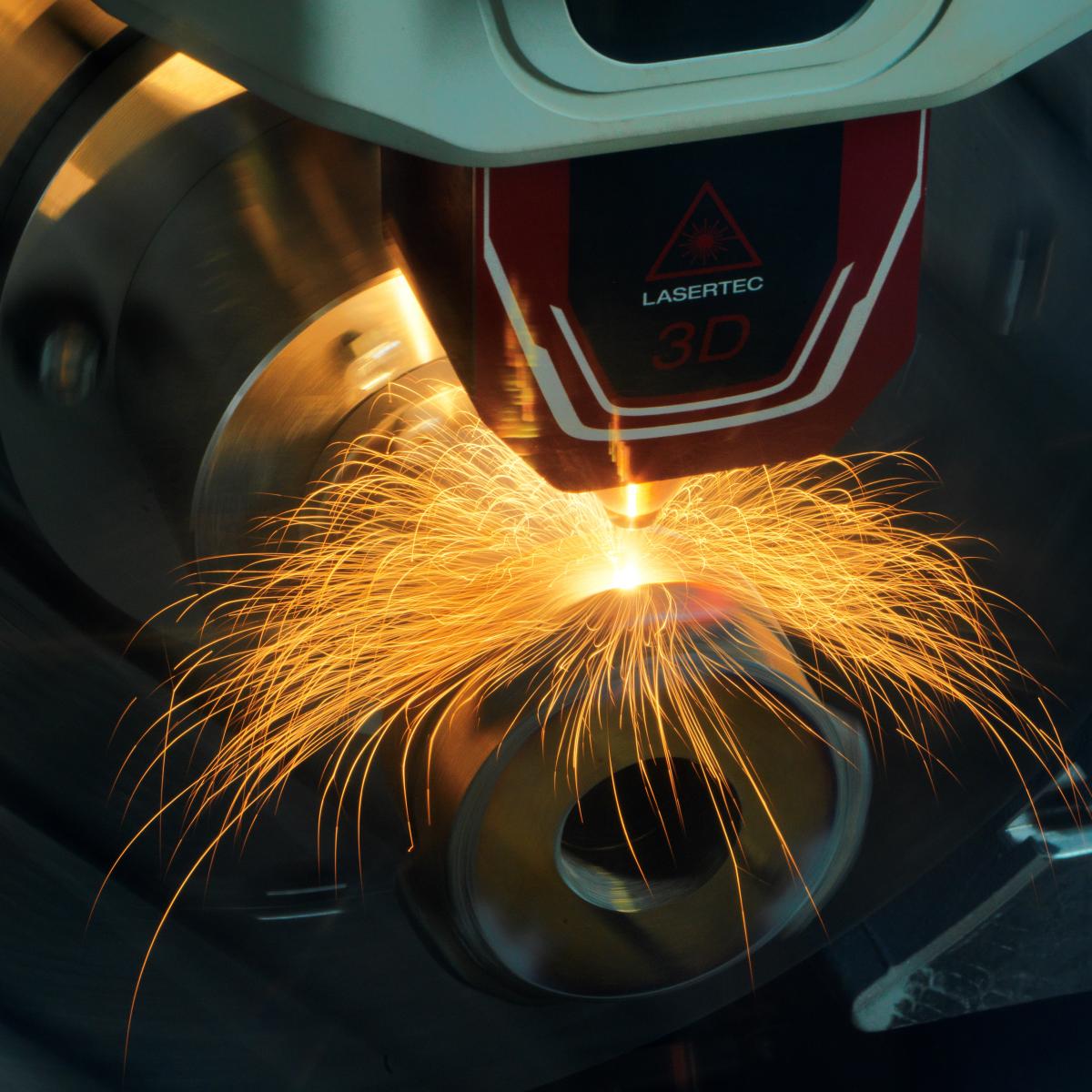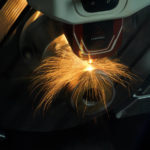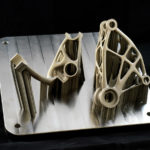Metal object printing has become an established reality mainly due to the spread of Selective Laser Melting (SLM) printers.
This technology uses a laser beam to fuse metal powder in a very precise way, thus making entire three-dimensional objects section by section. Metal 3D printing has thus paved the way for the construction of objects never conceived and designed before because they were unfeasible with conventional technologies.
In recent years, metal 3D printing has improved in quality and speed to the point where, in some cases, it is competitive for the production of small runs of components: hundreds or thousands of parts.
The emergence of metal additive manufacturing has brought to light some of its limitations such as, for example, the impossibility of making objects with internal voids because they would remain filled with powder, the mandatory use of substrates that then have to be removed making the process slower and more expensive, and, again, the impracticability of printing objects composed of different materials
The constraint of having to print objects with only one material has become increasingly evident and untenable, but carrying and distributing powders of different materials in distinct areas of the printing plane is not an easily solved problem.
So far there is only one company in the world that is attempting the multi-material approach using SLM technology, [1] but is still only at an experimental stage.
Direct Laser Deposition and the hybrid model
The technology that is really changing the rules of the game to overcome some of the limitations of SLM is called Direct Laser Deposition (DLD). This technology also uses a laser beam to melt metal powder, but in this case the process is very similar to welding.
How does it work?
A nozzle sprays the powder – along with inert gas – directing it to the deposition point. The laser beam is focused on the same spot and this creates a molten metal bath in which the powder supplied by the inert gas melts and, following the advancement of the laser, solidifies, creating a dense, compact structure that adheres to the substrate. This time the process of building three-dimensional objects is like that of fused polymer deposition 3D printers (FDM).
The use of DLD technology combined with an industrial CNC machine has resulted in one of the world’s first hybrid machines: the DMG MORI Lasertec 65 3D.
Such a hybrid machine allows many different uses due to the dual ability to contribute new material and remove material by milling, freely alternating between additive and subtractive steps.
In this way, for example, objects with closed cavities can be made, damaged components can be repaired, and better surface finishes can be achieved compared to those obtained with other metal 3D printing techniques due to the geometric precision typical of chip machining.
One of the most interesting aspects is that the machine can use powder from a different metal than the material of the object on which it will be machining. This feature offers the possibility of creating multi-material components with a simplicity unimaginable until now.
Consider, for example, objects made of cheap steel and covered with a layer of stainless steel that prevents oxidation, or components covered with a very hard material that prevents wear and tear, or even moulds with copper parts that facilitate cooling.
The applications of multi-material objects are truly many and usually highly sought after because they increase the functionality of the objects themselves.
The Lasertec technology provided by ProM Facility has an additional feature: it has two containers for two different types of metal powder. This means that during processing the two powders can be used alternately or even mixed together.
The possibility of making objects with properties that gradually change from those of one material to those of another is definitely a new frontier in industrial production.
Or objects that are magnetic in some areas and not in others or equipped with parts that conduct heat better and others less so, or, again, composed of structures that go from being brittle to being tough.
ProM Facility is conducting several application experiments on real cases in this area. The use of different material combinations is closely related to the compatibility of the materials used. In order to obtain functional parts, it is very important that strong and durable bonds are formed between the two materials. Some tests carried out have shown very good results while others have revealed some critical issues.
One of the best results is obtained by depositing bronze on steel. This combination is highly popular in industry because it is possible to replace bushings with objects directly covered in bronze.
It is precisely in this area that ProM Facility has undertaken an industrial research project with Dana Incorporated and in particular with the Arco (TN) operating facility.
Two different prototypes that incorporate a bronze part in the contact and abrasive wear areas are currently being studied.
These components are subjected to stresses and temperatures that even conventional bushings can withstand with difficulty, generating premature wear of the component.
Joining the two materials by means of DLD technology ensures better performance than having parts composed of two distinct components and provides a compactness that is difficult to achieve with other techniques. The interface between the two materials is represented by a continuous and constant weld that ensures excellent stress and heat transfer. Achieving better performance in these areas makes it possible to reduce wear and thus extend the life of the component.
This in turn lowers maintenance costs and increases energy efficiency – an increasingly important aspect regarding environmental sustainability.
Experiments at ProM Facility are yielding excellent results and paving the way for the use of Direct Laser Deposition technology in other applications as well, such as cladding (surface covering) with special materials and tool and mould making/repair.
In Rovereto the mechatronic prototyping workshop of excellence
ProM Facility is a technological infrastructure open to collaborations in which innovative products can be produced, researched, and tested, combining traditional mechanics with the most advanced and sophisticated physical and virtual prototyping, testing, and pre-qualification systems.
The result of a joint project between the Autonomous Province of Trento, Trentino Sviluppo, Fondazione Bruno Kessler, the University of Trento and Confindustria Trento, ProM Facility provides companies with an integrated platform for the prototyping and qualification of mechatronic systems and subsystems, with first-rate technological equipment in the areas of three-dimensional printing, electronics, product quality verification, integrated system design, metrology and information technology, and with particular focus on cyber security.
Thanks to ERDF regional European funds, the facility has innovative machinery for rapid prototyping of complete mechatronic systems, amounting to a total value of nearly 6 million euros, including an integrated machine tool that works simultaneously as a five-axis CNC milling machining center and as an additive manufacturing system by sintering and melting metal powders using a laser beam, a machine for combined laser cutting of tubes and sheets, 3D printers for making components by selective sintering or melting of metal and polymer powders, 3D scanners, an electrospindle lathe, and a supercomputer for development and training of deep neural networks.
Deposition of the new material and milling were done in the same machine without having to change placements. This is one of the most obvious advantages of a hybrid machine.




